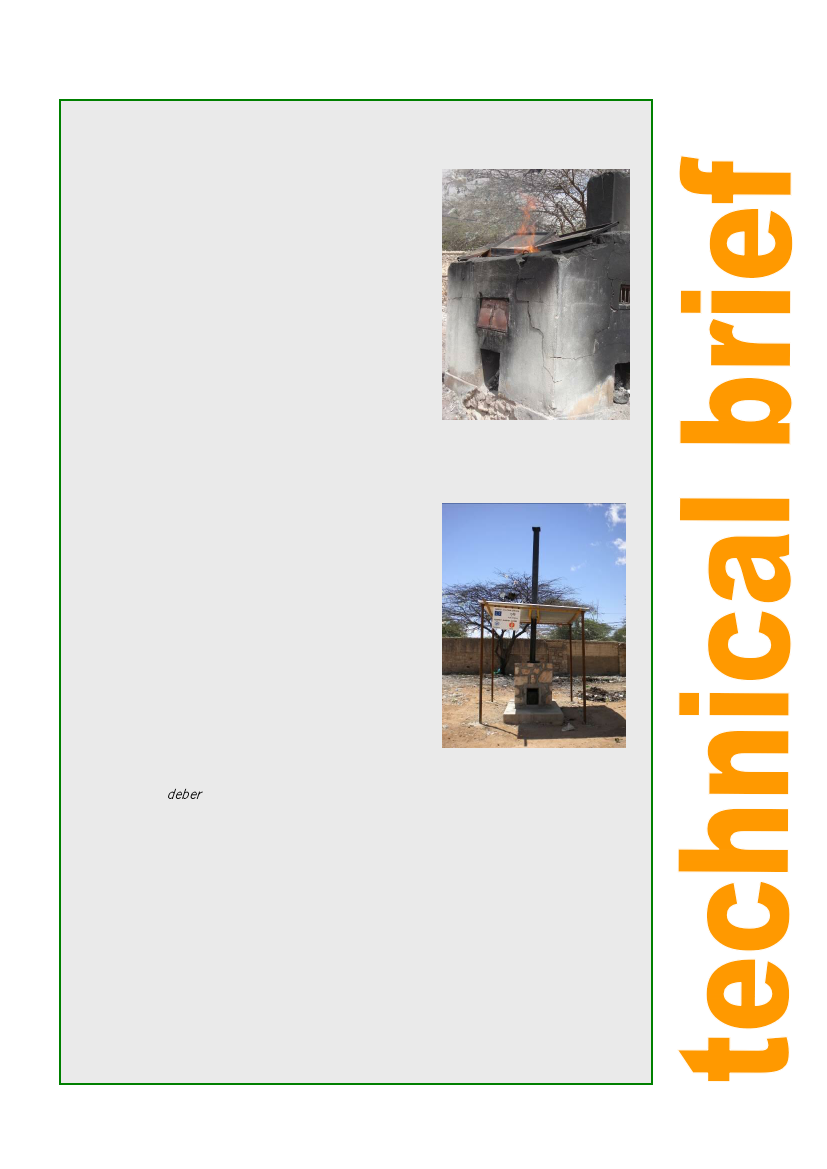
Healthcare waste management in developing countries
Practical Action
Box B: Implementation of De Montfort incinerators in Hargeisa, Somaliland
Hargeisa is the capital city of Somaliland, a self-declared
independent Republic situated in the north-west of
former Somalia. Three Mark 8a ‘De Montfort’
incinerators were implemented in three of the main
hospitals situated in Hargeisa: General Group Hospital
and TB Hospital are public structures, with a total
capacity respectively of about 300 and about 200
patients, whereas Edna Adan Hospital is a non profit
charitable hospital able to host 69 patients. The
activities were conducted within SISDISC project, which
run between 2008 and 2009, was led by Cesvi, an
Italian NGO, and funded by European Commission and
Italian Cooperation Agency.
At the beginning of the project the practices for waste
collection and disposal presented relevant differences in
the three facilities, but a common feature was that the
segregation of hazardous and non-hazardous wastes was
done properly only in some departments. At General
Group Hospital and TB Hospital hazardous waste,
collected by means of wheelbarrows, were subjected to
burning in old incinerators (see Fig. B.1), which were
poorly constructed and not opportunely repaired when
they broke down. At Edna Adan Hospital sharps and
infectious waste were collected and stored within the
hospital premises until the arrival of waste collectors
employed by the municipality.
Fig. B.1 – Old incinerator used
at General Group Hospital
before the intervention
The three incinerators were built between February and
June 2009 by local enterprises under the supervision of
the Italian NGO leading the project (see Fig. B.2).
Specific trainings were elaborated and delivered in order
to explain how to correctly operate and maintain the
incinerators. Initially, the availability of the appropriate
construction materials was the main technical issues
faced. The construction of the incinerator at TB Hospital
began using firebricks, as defined by the company in
charge of the building. They flaked off, so it was decided
to line the facility with a layer of cement and to use local
stones, called deber, for the other two facilities.
Fig. B.2 – New De Montfort
incinerator built at General
Group Hospital
The constraints linked with operation and maintenance of the incinerators did not affect
all the hospitals in the same way.
Major constraints were usually identified in the operation phase: irregular de-ashing
procedures, misuse of safety gears and ineffective separation of HCW were observed. These
operative constraints are all ascribable to some of the more common reasons, such as the
lack of supervision within the hospitals and the fact that trainings were successful initially
but were not repeated.
As regards the perception of the local stakeholders, the participants of the trainings on the
correct procedures for the operation of the incinerators showed a good interest and a high
comprehension of the explained activities. The user acceptance appeared high and the
patients of the hospitals witnessed about an overall improvement of hygienic conditions of
the three structures.
Source: Di Bella et al., 2011
7